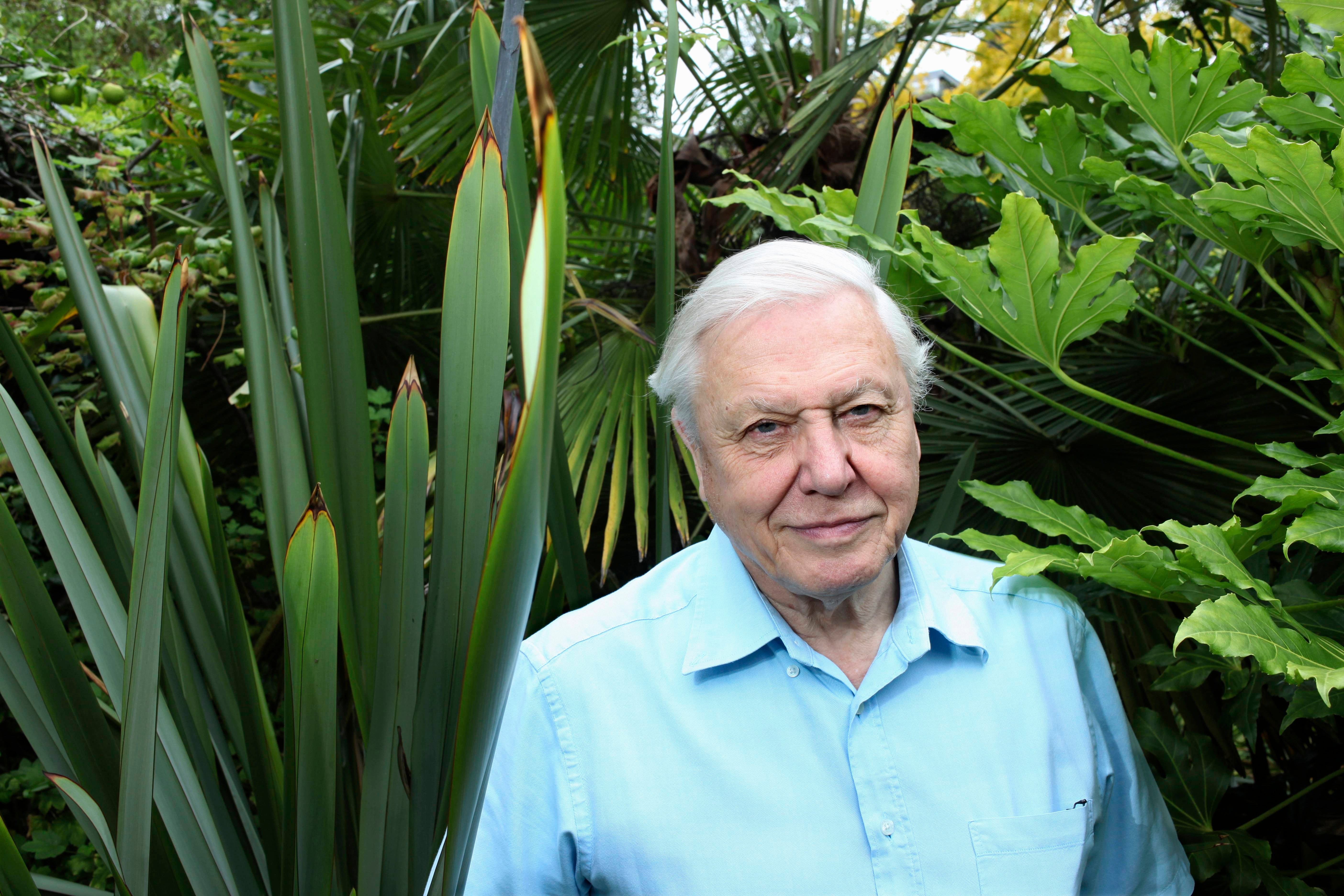Sir David Attenborough injured after being stabbed by ‘dangerous’ cactus
Broadcaster, 95, was filming new BBC series when he was left with ‘painful’ hand injury

Sir David Attenborough was left injured after being stabbed by a cactus with needles like “glass” while on the set of his new documentary.
The 95-year-old broadcaster was filming for the BBC series The Green Planet when he faced off against the cholla cactus in California.
Describing the rare plant as an “active aggressor” coated in “spicules of glass”, Sir David approached the cactus and put his hand inside the plant.
Despite the layers of protection provided by thick gloves, he was left with a “painful” hand injury.
Recounting the experience, he said: “The cholla really is a physical danger. It has these very dense spines in rosettes, so they point in all directions.
“And if you just brush against it, the spines are like spicules of glass, I mean they are that sharp and they go into you and you really have trouble getting them out.
“So that is a really dangerous plant. The cholla is an active aggressor. I mean, you feel you better stand back and you better watch out.”
The series’ executive producer, Michael Gunton, whose idea it was to send Sir David into danger, said: “One of the joys of going on location is thinking up horrible things to get David to do.
“So what we did, because it was so dangerous, was we got a Kevlar under-glove, and then on top of that, a welding glove. So you can imagine that’s about as good protection as you could possibly get.
“David bravely put his hand inside this cholla cactus, as requested. And halfway through it, these spikes still managed to get through those two bits of protection.
“And it’s quite painful, isn’t it?”
Mr Gunton observed how the cactus was “so dangerous” that many animals avoided it. “Not only does it puncture you, but they sort of act like a trap,” he said.
“So if you put your hand into it, you can’t remove your fingers and you do unfortunately find grisly signs of an animal that has gone and got trapped by it.”
The upcoming three-part series from the BBC’s Natural History Unit shows the naturalist getting up and close with a range of plants from the US to Costa Rica and across Europe, to show the intricate lives of plants and the ecosystems that flourish around them.
The documentary was filmed in 26 countries over four years and marks the first time he has returned to the filming the world of plants in 27 years, since his 1995 series the Private Life of Plants.
According to the BBC, The Green Planet aims to show “how science and technologies have advanced, and how our understanding of the ways in which plants behave and interact has evolved”.
The series had its global premiere in Glasgow in conjunction with the Cop26 summit on tackling climate change.
The Green Planet begins on BBC One on 9 January.
Subscribe to Independent Premium to bookmark this article
Want to bookmark your favourite articles and stories to read or reference later? Start your Independent Premium subscription today.

Join our commenting forum
Join thought-provoking conversations, follow other Independent readers and see their replies